Time to Get Serious About Scouting Corn for Black Cutworm Feeding
Black Cutworm (BCW) catches continue to be high in Wyoming and Livingston counties. See the degree day accumulations from the first major flight through June 2. Most of our region will be over the 300 DD this weekend which means BCW will be big enough to start cutting corn plants. Time to really start scouting the corn fields for leaf feeding and cut and missing plants. I have heard that WNY CMA folks have found a couple of fields over the injury threshold.
If 3 to 5% of the plants are missing or cut, spraying with an insecticide is warranted. Remember, BCW are nocturnal feeders and hide below ground during the day. The NWNY team has a good video on how to scout for BCW damage and find the culprit.
We have not had any reports of armyworm injury yet. Corn that was planted green into a cover crop needs to be scouted. Winter wheat, barley, rye and grass hay fields should also be watched carefully. Look for signs of blackbirds flying into winter grain fields and sitting in tree and on power lines along the field. Guaranteed they are diving in there to feed on armyworms!
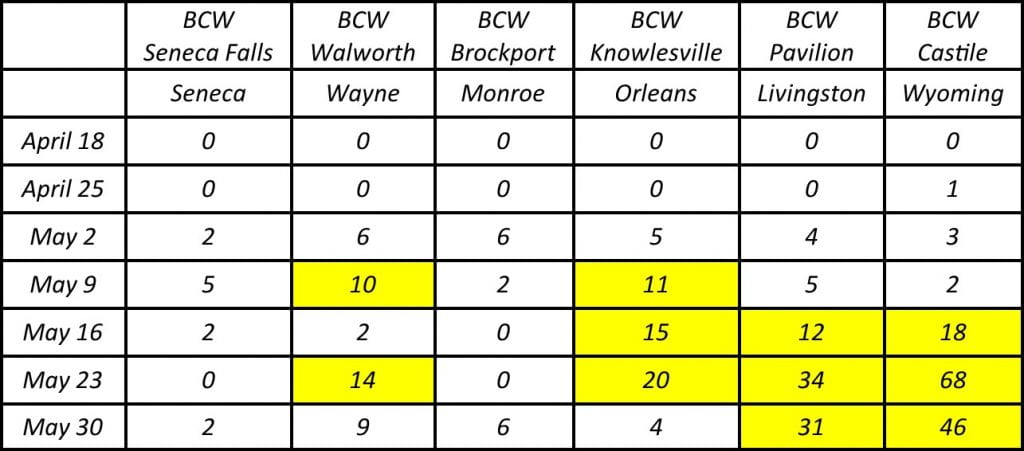
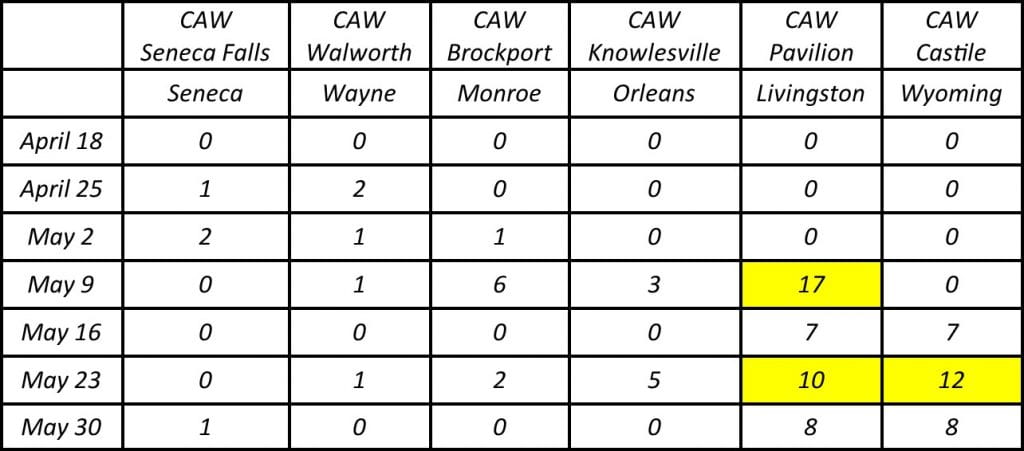
- Egg hatch around 90 Degree Days
- Plant cutting around 300 Degree Days
- Degree Day data from Network for Environment and Weather Applications, NEWA
Cereal Leaf Beetles Active in Oats
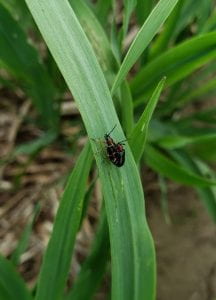
CLB larvae were easy to find in wheat fields this week. All spring and winter small grains should be scouted this week. Threshold is three eggs and larvae per plant or one larva per flag leaf. I also saw a bunch of adults mating in oats this week. Many of these fields are ready for weed control. If there are lots of adults, an insecticide would be appropriate before they start laying eggs. If you have a field heavily infested with CLB larvae, please call Mike. We would like to collect larvae for a survey of natural enemy populations in the region.
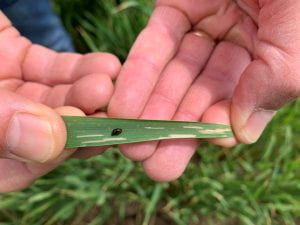
Soybean Aphids Migrating to Soybeans
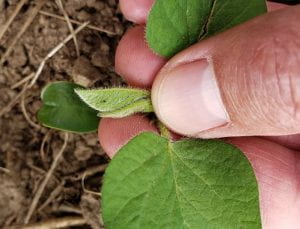
I saw the first winged soybean aphids flying into a soybean field on Tuesday in Ontario County. They were coming off of the buckthorn bushes in the hedgerow where they overwintered as eggs. They could easily be found on the first cotyledons that were just emerging. These adults will immediately give birth to live young which will start feeding on the soybeans. They will multiply quickly so soybean scouting should begin. This field had Cruiser treated seed so I hope that will take care of this first flush of aphids. I will be watching this field closely.
Potato Leafhoppers have Arrived in New York
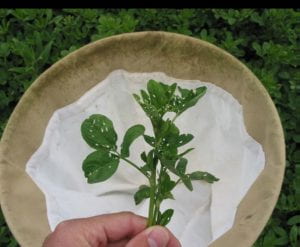
We received the first reports of PLH in alfalfa fields this week from our CCE colleagues in eastern NY. They usually arrive around Memorial Day so it is not a surprise. Time to get the sweep nets out and start monitoring the regrowth on second cut. I will write more on thresholds and proper sampling next week. Alfalfa weevil continue to be a nuisance in second cut and I hear many of the larvae are still quite small. Remember, threshold for spraying is if 50% of the alfalfa tips are showing feeding (shot hole) injury.
Corn Fields Needed for Nematode Sampling
I talked about corn nematodes this winter at Corn Congress. I would like to take a survey of our NWNY region to see what species we have and what their current populations are. I have a grant to pay for 50 nematode samples. In most cases, nematode injury goes unnoticed. I am looking for fields that are planted to corn that may have a history of areas that have been stunted, off-color and low yielding that you just could not figure out why. We will sample at least 5 fields in each of the 9 NWNY counties that we partner with. Give me a call or text me if you have a field you think is a candidate. I have some folks that have already called me up. First come, first served. Thanks!




